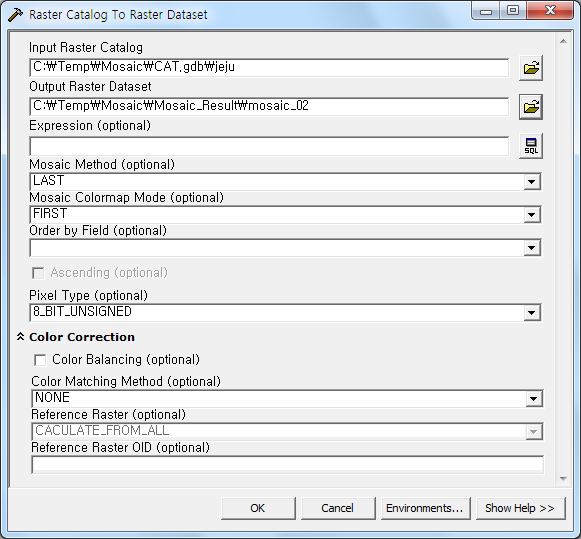

See the table below for mosaic dataset compatibility: However, a mosaic dataset created with a newer version of ArcGIS may not be backwards compatible with older versions. In general, mosaic datasets created with older versions of ArcGIS can be read and handled with newer versions of ArcGIS. Mosaic dataset are dependent on the version of ArcGIS on which they were built, and are compatible across the ArcGIS platform for a particular release cycle. The lidar data can be stored in the file system as LAS files or LAS datasets, or in a geodatabase as a terrain dataset. In addition to raster data, you can store and manage lidar data in a mosaic dataset in the same way as raster datasets and even together with raster datasets. The results of that query could be a set of images that you can process one by one, or it could be a dynamically generated mosaicked image. You can also query a mosaic dataset based on your spatial and nonspatial query constraints. There are also many additional properties for viewing, including setting a mosaicking method, that make these datasets unique and functional in many situations. This allows for faster viewing of the data and allows you to quickly serve these datasets. Overviews (like pyramids) can be generated for the entire data collection. You can add raster data from different sensor systems in different projections, resolutions, pixel depths, and numbers of bands. Mosaic datasets are not limited to one particular type of raster data. You can query the mosaic dataset for the images you need based on time or date and use a mosaic method to display the mosaicked image according to a time or date attribute. The mosaic dataset is an ideal dataset for storing temporal data. The data can even be completely or partially overlapping but captured over different dates. For example, you can have images that completely cover an area, or you can have many strips of images that may not join together to form a continuous image (such as along pipelines).

The data in a mosaic dataset does not have to be adjoining or overlapping but can exist as unconnected, discontinuous datasets. Individual rasters and metadata comprise mosaic datasets. Storing metadata as attributes enables parameters such as sensor orientation data to be managed more easily and allows fast queries to enable selections. The metadata can be managed within the raster's record as well as attributes in the attribute table.

The raster datasets in a mosaic dataset can remain in their native format on disk or exist in the geodatabase. These collections can be extremely large in both total file size and number of datasets. Learn about the supported raster dataset file formats Mosaic datasetsĪ mosaic dataset is a collection of raster datasets (images) stored as a catalog and viewed or accessed as a single mosaicked image or individual images (rasters). ArcGIS Desktop supports more than 70 different file formats for raster datasets, including TIFF, JPEG 2000, Esri Grid, and MrSid. Each band consists of an array of pixels (cells), and each pixel has a value. Below is an example of a raster dataset.Ī raster dataset is any valid raster format organized into one or more bands. It's also the output from many geoprocessing tools that process raster data. A raster dataset is the most basic raster data storage model on which the others are built-mosaic datasets manage raster datasets. It could also be stored in a geodatabase, but storing rasters inside a database is not recommended. The term raster dataset refers to any raster model that is stored on disk or accessible as single raster stored in cloud storage. Most imagery and raster data (such as an orthoimage or DEM) is provided as a raster dataset. A third geodatabase option is the raster catalog this option is not discussed below because it has been superceded by the mosaic dataset, which has many more capabilities, uses, and functions. If you're choosing to store the data in a file system, you're choosing to store raster datasets, whereas a geodatabase can store either raster datasets or mosaic datasets. This decision also involves determining whether to store all the data in a single dataset or in a catalog of potentially many datasets. There are three methods to store image and raster data: as files in a file system, within a geodatabase, or managed from within the geodatabase but stored in a file system. These datasets, and collections of them, are often very large, so having good management capabilities is critical and ArcGIS Desktop is designed to do this. You often process this data to create new forms that can be processed on the fly or saved as another version. Rarely will you edit individual pixel values like you might edit a feature in a vector dataset. Image and raster data is usually stored in their original form. Raster data structures and storage models


 0 kommentar(er)
0 kommentar(er)
